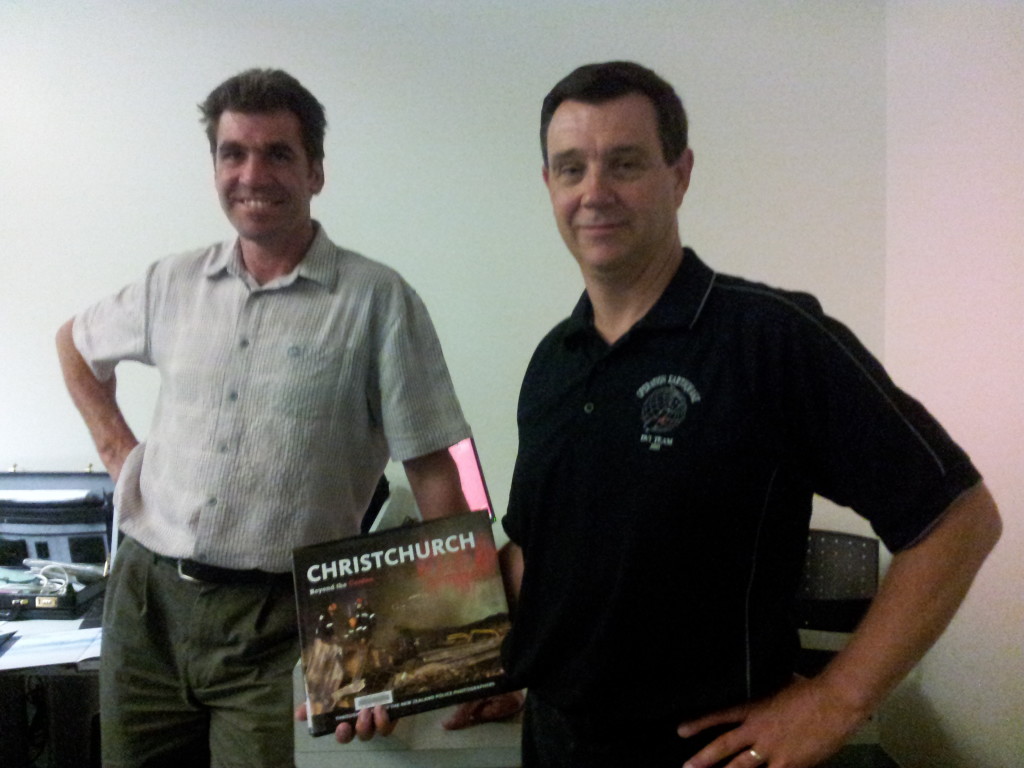Hamilton constables play part in documenting Christchurch tragedy
The work of two Hamilton police photographers documenting the Christchurch earthquake features in a new book, 22.2: Beyond the Cordon.
Rare and sobering images of Christchurch’s February earthquake featured at the Waikato University Student Centre this week.
As part of New Zealand Book Month events, two Hamilton Senior Constables, Warrick Pearson and Nigel Fookes, were invited by Hamilton City Libraries to share their beyond -the-cordon experience.

Both police forensic photographers, Constables Pearson and Fookes were sent to document the response to the 6.3 earthquake and be part of the recovery effort.
Despite encountering tragedy frequently in their line of work, both men found the situation unsettling when designated to the PGC building.
On day two, Mr Fookes was stationed at the PGC building before spending three night shifts at the CTV building.
Mr Pearson arrived on day four, and spent his first few shifts at the PGC building.
The experienced policemen answered questions about the disaster, their career, and the commemorative publication titled 22.2: Beyond the Cordon, launched last September.
“It (the aftermath) was like in the movies, where everybody leaves the city. You could only hear your footsteps, everybody was gone. It was quiet, it wasn’t what a city is supposed to feel like,” said Constable Pearson.
Constable Fookes said he would hate to tell people what to do in an earthquake. “They say not to use the lift shafts so people’s instinct is to go for the stairwell. In the Forsyth Barr building …the complete stairwell collapsed. Anybody that could have been on it at the time it happened would be dead.”
Teeth, flesh, and bone fragments found amongst the rubble were what Fookes, Pearson and Urban Search and Rescue (national and international) were dealing with when it came to identifying missing persons.
Mr Pearson said the correct attitude helped. “The thing is with death, there is an idea that you can catch death. You can’t. Once you get over that fear and know that it can’t hurt you… it’s the living we (police) are scared of you know. They could harm me or Nigel, a body can’t. “
Their job involved putting themselves in risky situations such as being suspended in a cage to capture high angle shots of a crumbling building rescue crew were assessing, climbing over fragile structures and entering precarious sites.
Mr Fookes said the unpleasant was a reality. “It is part of the job and there may be a situation where it is someone we know, that has happened, or it may be a child the same age as your own.
“I wanted to take photos, basically. That’s how I got into the job,” said Mr Fookes.
The two men were asked how they coped when they learnt they were to stop searching for victims and were there to recover bodies.
“It goes over our heads… it has to really. Some things will stick with us for the rest of our lives. We did have to see a counsellor but I found it unnecessary. Guys wouldn’t last long if they couldn’t handle it,” said Mr Pearson.
The 208-page, hard-cover book, published by Hachette NZ, contains 256 colour pictures taken by nine Canterbury police photographers and 14 colleagues – including Constables Fookes and Pearson – from around the country.
Along with two poems penned by Gary McCormick where the earthquake is a “miserable bastard”, the book is available at Poppies, Whitcoulls, The Warehouse, and Paper Plus.
All royalties go to the Family Help Trust, a Christchurch charity for disadvantaged families, including many affected by the earthquake.




